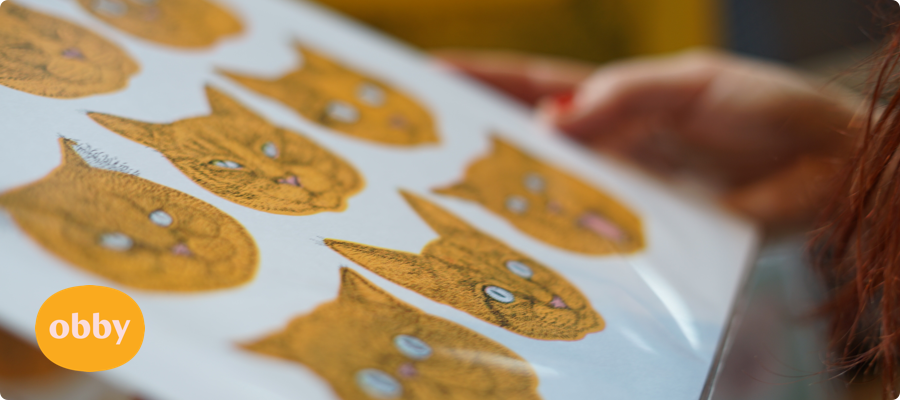
An intaglio technique in printmaking refers to all printing and printmaking techniques that involve making indents or incisions into a plate or print surface which hold the ink when ink is applied to the surface and then wiped clean. The ink stays in the sunken area, leaving your desired pattern.
AQUATINT
Aquatint is a printmaking technique that produces tonal effects by using acid to eat into the printing plate creating sunken areas which hold the ink
Fine particles of acid-resistant material, such as powdered rosin, are attached to a printing plate by heating. The plate is then immersed in an acid bath, just like etching. The acid eats into the metal around the particles to produce a granular pattern of tiny indented rings. These hold sufficient ink to give the effect of an area of wash when inked and printed. The extent of the printed areas can be controlled by varnishing those parts of the plate to appear white in the final design. Gradations of tone can be achieved by varying the length of time in the acid bath; longer periods produce more deeply-bitten rings, which print darker areas of tone. The technique was developed in France in the 1760s and became popular in Britain in the late eighteenth and early nineteenth centuries. It is often used in combination with other intaglio techniques.
ETCHING
Etching is a printmaking technique that uses chemical action to produce incised lines in a metal printing plate which then hold the applied ink and form the image
The plate, traditionally copper but now usually zinc, is prepared with an acid-resistant ground. Lines are drawn through the ground, exposing the metal. The plate is then immersed in acid and the exposed metal is ‘bitten’, producing incised lines. Stronger acid and longer exposure produce more deeply bitten lines. The resist is removed and ink applied to the sunken lines but wiped from the surface. The plate is then placed against the paper and passed through a printing press with great pressure to transfer the ink from the recessed lines. Sometimes ink may be left on the plate surface to provide a background tone.
Etching was used for decorating metal from the fourteenth century but was probably not used for printmaking much before the early sixteenth century. Since then many etching techniques have been developed, which are often used in conjunction with each other: soft-ground etching uses a non-drying resist or ground, to produce softer lines; spit bite involves painting or splashing acid onto the plate; open bite in which areas of the plate are exposed to acid with no resistance; photo-etching (also called photogravure or heliogravure) is produced by coating the printing plate with a light-sensitive acid-resist ground and then exposing this to light to reproduce a photographic image. Foul biting results from accidental or unintentional erosion of the acid resist.
ENGRAVING
The design is manually incised into an engraving plate using a burin, an engraving tool like a very fine chisel with a lozenge-shaped tip. The burin makes incisions into the metal at various angles and with varying pressure which dictates the quantity of ink the line can hold – hence variations in width and darkness when printed. The technique of engraving metal dates from classical antiquity as a method of decorating objects. However, it was not until about 1430 in Germany that engraved plates began to be used for making prints. Photoengraving is a process using acid to etch a photographically produced image onto a metal plate that can then be printed from.
DRYPOINT
Drypoint is usually done on copper plates as the softer metal lends itself to this technique. The process of incising for drypoint creates a slightly raised ragged rough edge to the lines, known as the burr. When ink that has been applied to the plate is wiped off both the incised line and specifically the burr receive ink when the plate is wiped, giving the printed line a distinctive velvety look. Owing to the delicate nature of the burr, drypoint is usually made in small editions, stopping before the burr is crushed by the pressure of the intaglio press. Drypoint is often combined with other intaglio techniques, such as etching.

